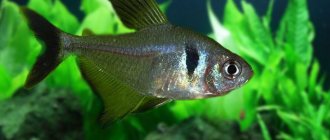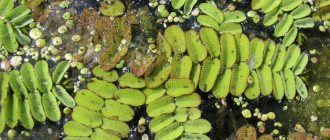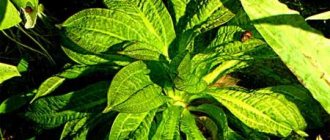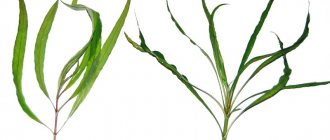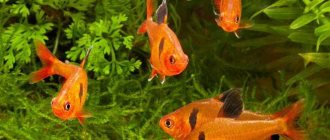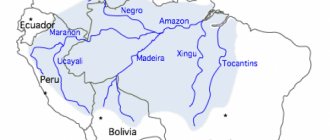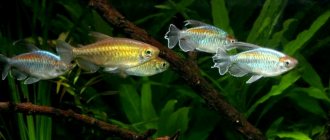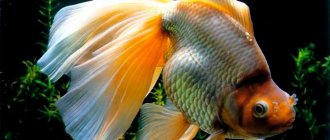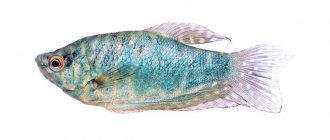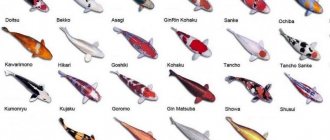Description and distribution of rotala
The forms cultivated in aquariums are herbaceous perennials, growing up to 35 cm in height. Their stems are thin, long, and knotty. From each node, oblong petioleless leaves are formed. Old leaves, shaded by the apical ones, die off, and the lower part of the stem becomes bare. The color of the plant varies from soft green to reddish purple.
The root system is weak, represented by a creeping rhizome with thread-like roots. Additional root shoots appear on the stems. They are not fixed in the ground, but are freely located in the water column.
Above-water shoots may bloom. Flowers of regular shape, solitary or collected in apical inflorescences. They form dry fruit boxes filled with small seeds.
The natural habitat of the rotala is tropical and temperate latitudes. It grows on river shallows and wetlands. Some species are common in southeast Asia, Georgia, Armenia, Azerbaijan and other Transcaucasian countries.
Reproduction
You can get offspring from rotala in two ways: by cuttings or by separating root shoots. These methods are very similar.
- Using a sharp knife or your fingernails, separate the head cutting from the stem. It is important that the top consists of at least 3 nodes.
- Having removed the leaves from the lower 2 nodes, plant the cuttings in the soil so that the bare nodes are covered with soil (later they will sprout roots).
- If the stem has formed a side shoot with 3 nodes, cut the cutting just above the node from which the side shoot extends.
- If the rotala is large enough, then in addition to the top, you can cut off the next section of the trunk from it - a shoot cutting with 4 or more nodes.
- After removing the leaves from the lower 2 nodes, plant the cuttings in the soil.
- First of all, the head cutting will begin to grow. The mother plant remaining in the soil with a developed rhizome will also soon produce lateral shoots at the nodes. The last one to start growing is the shoot cutting.
Benefits for the aquarium
This is a graceful, actively growing herb. It looks impressive as a plant on its own, emphasizing the structural depth of the background of the aqua zone, and can be used to create aesthetically attractive underwater compositions.
Rotala affects the hydrochemical characteristics of the aquatic environment:
- absorbs nitrogenous and other compounds;
- saturates water with oxygen;
- becomes a haven for bacterial flora, which is a natural aquarium filter.
It creates favorable conditions for the life of fish and other inhabitants of the artificial biocenosis. Fry and adults can hide in the thickets; the foliage serves as an additional source of food for some of them.
How to plant
This plant can be cultivated in water without any substrate - in this case, it will receive all the beneficial elements it requires directly from the aquatic environment. However, when grown in aquarium soil, the grass grows much faster, so the following is an option for planting rotala in the soil.
A comfortable thickness of the soil layer is 2–3 cm. This is quite enough for this plant, since it has a creeping rhizome. Small pebbles with clay are best suited as a soil mixture. The soil should be lightly covered with water.
It is also important to choose the right place in the artificial reservoir where the Indian guest will develop. Plant vegetation closer to the back wall and side walls of the vessel so that it does not interfere with the contemplation of the inhabitants of the aquarium, serving as a beautiful background for them.
Types of aquarium rotala
The genus Rotala includes many hygrophytic plants. They differ in the color of flowers, leaves and other features.
Rotala Walliha
The species R. wallichii, although demanding regarding conditions in the aquarium, is attractive for its decorative effect. Its thin, erect shoots up to 35 cm high give almost no lateral branches. They are densely covered with needle-shaped leaves about 15 mm long, the color of which varies from pale green to crimson. Sometimes it is possible to achieve a particularly spectacular golden-pink hue.
Rotala Wallich.
Indian
Rotala indica is found naturally in India, China, and Indonesia. Its reddish lanceolate leaves, which take on a bluish tint in bright light, are distinguished by their opposite arrangement. Their width does not exceed 3 mm. With photodeficiency, the stems become elongated, the leaves become smaller and pale, the plant loses its attractiveness, becoming a banal representative of the aquarium flora.
Round-leaved
This type of plant is often identified with rotala indica, believing that this is its terrestrial form. The plants are similar in many ways, but represent different taxonomic groups. The round-leaved variety (R. rotundifolia sp. green) is distinguished by a slightly larger distance between the stem nodes. Its oval leaves, about 12 mm long, are colored rich green. Red flowers may appear on the surface of the stems. If you pinch the top, the shoots will begin to actively branch, creating picturesque thickets.
Nanyenshan
Similar to Rotala Wallich. Its long (up to 2.5 cm) narrow leaves are collected in several pieces in closely spaced whorls. In good light, the stems are located horizontally, almost parallel to the ground surface, and the apical foliage acquires an amber or golden-red hue. With an inclined orientation, the shoot plant can be placed in the central part of the aquarium.
Macrandra
Large-stamen rotala (R. macrandra) is characterized by increased sensitivity to changes in housing conditions. The arrangement of the leaves is opposite, the color ranges from pinkish-olive to deep red. The flowers are pink with long stamens rising above the receptacle.
Macrandra.
There are several subspecies of makrandra:
- Red. The largest-leaved of the rotals. The leaves are oval, up to 3 cm in length.
- Green. Less whimsical. The leaf blades are smaller, soft green on the upper side and pinkish on the lower side.
- Narrow-leaved. Differs from green in smaller width of foliage (up to 10 mm). Branches well.
- Tiger. Characterized by pronounced venation of leaves. The color is red or pinkish, the veins are lighter.
- Mini. The stem is 10-15 cm long, covered with small elongated leaves.
Several hybrids have also been developed.
Hipuris
R. hippuris grows in Japan and is found in decorative ponds in Taiwan. Coastal specimens rise above the ground by half a meter. The stem is whorled, the leaves are needle-shaped, light green or golden in color. The nodes and apical part may acquire a light or rich pink tint. Plants are planted in a cluster, most often in the background and on the sides.
Perls
Pearls (Rotala pearls) grow in the wetlands of Singapore, but are rarely found in aquariums. The leaves are small, 5-7 mm, curved, juicy green on top, pinkish or violet on the reverse side. The lateral edges curl towards each other at an angle, giving the leaves a pointed shape. The species is not characterized by rapid growth, and with insufficient care it becomes similar to the round-leaved variety.
Pusila
Rotala pusilla grows in Japan, Brazil, and African countries. The stem is dense, tall (up to 40 cm), erect. The leaves are narrow, pointed, the ends are slightly curved downwards. There is a pronounced resemblance to indica, but the color of the foliage is predominantly yellowish, the stem is red or light brown. For rapid growth, good care is needed.
Rotala Pusila.
Bangladesh
The variety is widespread in the waters of Bangladesh, as reflected in the name. She is relatively unpretentious. Used for planting in the middle ground against a background of aquarium greens.
The stems of this hygrophyte are densely leafy, about 20 cm high. The leaf blades are thin, 1-1.5 mm wide, mostly light green. Bright lighting promotes pinking of shoots and apical leaves.
Butterfly
Rotala sp. Butterfly is a compact plant of bright crimson or red color, often considered as a form of makrandra. It got its name because the leaves resemble butterfly wings. They are thin, wavy, shiny, oval in shape with a pointed edge. They are located in nodes in pairs opposite each other. The average height of the shoots is 15 cm, so they can be placed in the foreground.
Mexican goias
Distributed in tropical and warm temperate regions throughout the world. It is a weed of rice plantations. The stem of this variety is creeping or erect and branches well. The leaves are reddish-green, narrowly lanceolate, in the above-water environment they become wider (up to 5 mm), in whorls of 3-5 pieces. The flowers are solitary, formed in the leaf axils.
Mexican goyas.
Features of rotala content
For active growth and preservation of decorative features, special conditions must be created.
Requirements for an aquarium
Preference should be given to containers with a volume of 100 liters or more. Aeration and filtration equipment should be located away from them.
The water should be soft (5-10°F), fresh and unturbid, acidity should be low or neutral. The temperature is maintained at +24…+28°С. When it decreases, growth slows down; further decrease leads to the death of the plant. Change 15-25% of the water volume weekly. Carbon dioxide supply required.
Intense lighting is required, the brightness of which is selected individually. In dim light it becomes very stretched and loses color saturation. Its excess can lead to the appearance of algae, which will cause the sprouts to die. Light mode – at least 10 hours of backlight in addition to 2 hours of natural light.
Priming
The composition of the soil is not particularly important; natural siltation is enough for nutrition. The grass develops well in a floating state (without rooting). Although the roots are weakly anchored in the soil, rooted specimens grow faster and look more impressive.
The substrate should not be too dense. You can use coarse sand or pebbles with the addition of peat. Layer thickness – 3 cm.
Landing
The prepared cuttings are placed in aquarium water and left for several days. When the roots are 0.5 cm long, the sprouts can be planted. They are placed in groups of 10-20 copies, placing clay lumps under the roots. Select the most illuminated areas with minimal flow, mainly in the background and on the sides. For better fixation in the sand, the roots are pressed with gravel.
Secrets of success
There are three main factors for the successful cultivation of Rotala: light, carbon dioxide, temperature.
The plant is planted closer to the side walls, next to a natural source of light. If there is a deficiency, artificial lighting is used at a rate of at least 0.5 W/l. Daylight hours should last about 12–14 hours. Brighter lighting promotes the growth of blue-green algae, which can damage Rotala. In turn, the lack of light causes either a suspension of plant growth or the appearance of elongated, bare shoots. A sufficient level of illumination is indicated by the reddish color of young leaves. The CO2 concentration must be at least 20 ppm.
In its natural environment, Rotala prefers a tropical climate. Accordingly, the optimal water temperature should be around 24–27ºС, with preference for the upper limit. In cold water the plant may die.
An additional success factor is water hardness. It is recommended to use soft water, below 6º. When the indicator changes to 12º and above, Rotala dies. In addition, it is necessary to monitor the purity of the water. It is recommended to replace a fourth or third of the volume every two weeks.
Fertilizing with mineral fertilizers is allowed, but the permissible concentration should be two times lower than that specified by the manufacturer.

